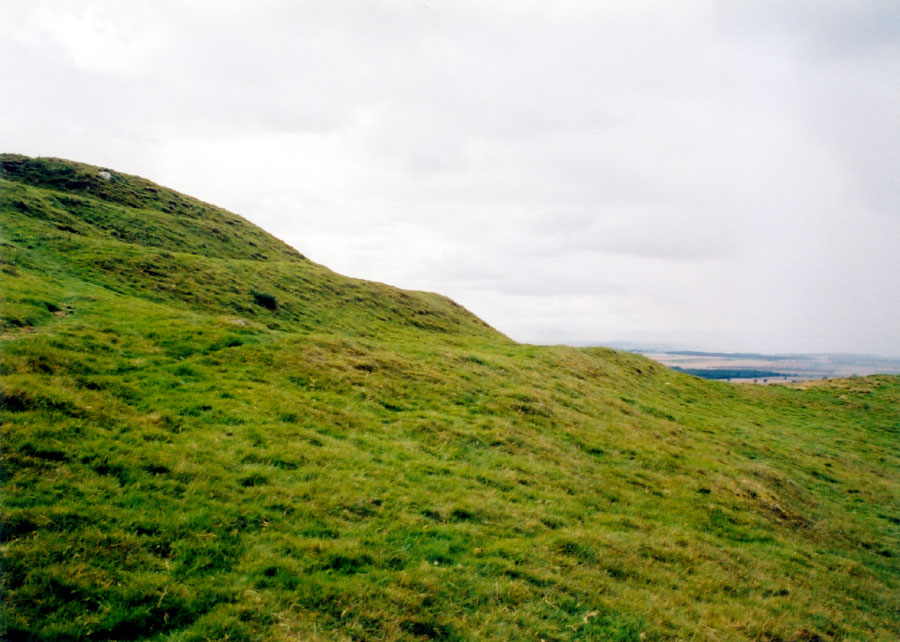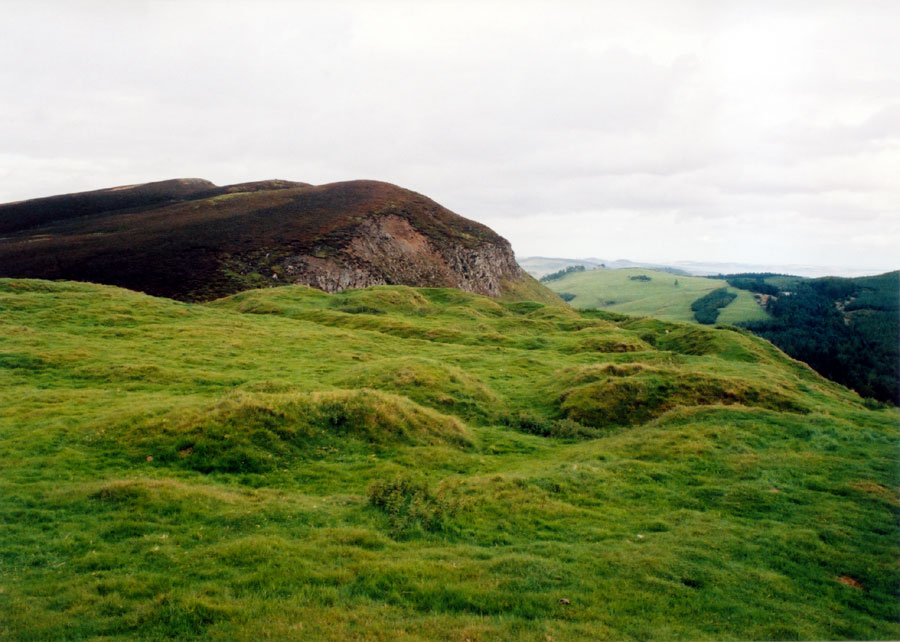

This magnificent fort consists of substantial defences, and although much disfigured through time and numerous archaeological excavations, it is still an impressive structure.
The central citadel consists of a huge inner wall which is 9m thick in places, and two outer ramparts enclosing an oval area of around 52m by 25m. Outside of this are a series of terraces which are still in very good condition.

Originally there was a stone rampart around the bottom of these terraces – enclosing an area of around 2.16 hectares – but it was apparently robbed at some point in history to build the walls on the summit, suggesting extensive remodelling over the fort’s lifetime.

There is evidence of timber houses on the southern terraces, and a stone-walled hut-circle on the rampart to the south. The fort was excavated by antiquarians in 1799, 1819 and 1859. Finds include a bronze spiral finger-ring, a quern, animal bones and midden material, and the skeletal remains of two adults and a child found in a two-compartment chamber which is thought to have been a .


It is believed the fort replaced a much earlier fortification, and vitrified material has been found at the summit, incorporated into later walls. It has been suggested that the fort may be that of Dunsion, mentioned in the Pictish Regnal Lists, but this has not been proved.

Alternative names for Dunsinnan Hill
Dunsinan Hill; Dunsinane Hill; Macbeth's Castle
Where is Dunsinnan Hill?
Dunsinnan Hill is in the parish of Collace and the county of Perthshire.
Grid reference: NO 2139 3167
Lat / long: 56.470625, -3.277665








